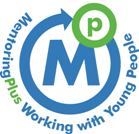There are a number of options available when seeking venture capital finance and we make it our mission to find the solution that fits. One of the options for finance is our Investor Director Programme – set up to provide a framework for companies to raise the finance that they need as well as strengthening their management teams with the expertise and experience of the Investors themselves.
Catalyst provides Investor Directors (ID’s) to early stage companies. Currently the Catalyst database has over 3000 individuals with industry experience ranging from medical devices to the Oil industry. These ID’s are highly qualified and willing to invest in fast growth early stage companies. Typically ID’s are successful business people who want to diversify their own investment portfolio and are seeking opportunities to work with early stage companies where they can use their expertise, have some influence on the strategy and operation of the company and generally make a difference.
The origins of the programme lie in Catalyst’s experience of building early stage companies. We recognised that the right Chairman/Non Executive Directors can have a transformative effect on early stage companies: they can open up opportunities, prevent obvious strategic and operational errors, and catalyse change. The programme can also provide considerable benefit to financial investors.
Benefits to the Company:
• Provides highly qualified and sector experienced individuals who are able to help steer and develop companies
• Can be a key enabler to realise the company/founder ambitions
• Provides a mentor and sounding board for the CEO
• Unlike with “Angel Investors” Candidates/Investor selection is under the control of the company
• ID’s are frequently well connected in the funding community and can facilitate further fund raising
• Will typically have the experience to prepare the business for eventual exit
Benefits to financial Investors:
• Provides comfort that highly experienced/knowledgeable individuals are willing to invest so supporting the due diligence process
• Adds to the Investor’s knowledge of the industry sector
• Supplements scarce investable funds
• Strengthens corporate governance
• Strengthens management
• Can be used in a turnaround situation to protect investment
Which companies qualify for the Programme?
The ID programme currently has a 100% success rate in providing ID’s because only qualifying companies are accepted. To qualify companies must have:
• an addressable worldwide market in excess of $1billion per annum and/or an addressable UK market in excess of £100 million per annum
• a scalable business model
• a core management team with an entrepreneurial driver
• a defensible competitive advantage
• ambitions to achieve revenues in excess of £5 million per annum at the end of a four year plan
• proof of customer acceptance
• willingness to accept change
Getting an ID – The Process
We have a three step process:
Step 1 – We review the company’s business plan and work with them to ensure that they meet the qualifications and are communicating the message appropriately. With the management team we identify the ideal profile of individuals required. This may be a Chairman with a good industry contact list, sales and marketing specialist, technical/operational expert; or a financial director.
Step 2 – We solicit interest from members of the programme by circulating an anonymous profile of the company. Interested members are then contacted to ensure that they meet the profile and then an executive summary is sent to them to allow them to better gauge their interest. Selected individuals are then sent a copy of the business plan under an NDA. Meetings are then arranged with the company and offers are invited from both sides to establish an agreement in principle.
Step 3 – Having established a heads of agreement we then help to close the deal. This can involve a range of tasks from providing guidance on suitable tax and legal advisers to appropriate service agreements.
If you would like to know more about the programme please contact us.
You can download this overview with additional case studies from our resources section.






